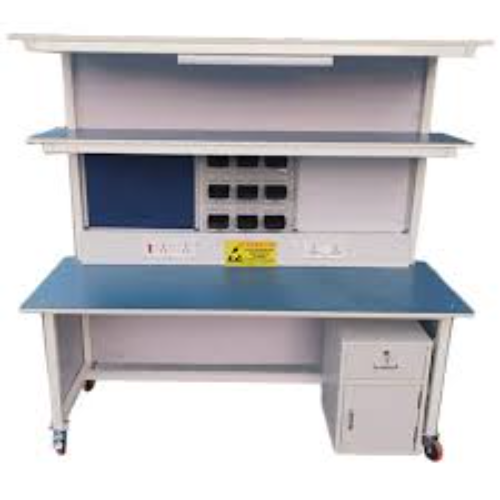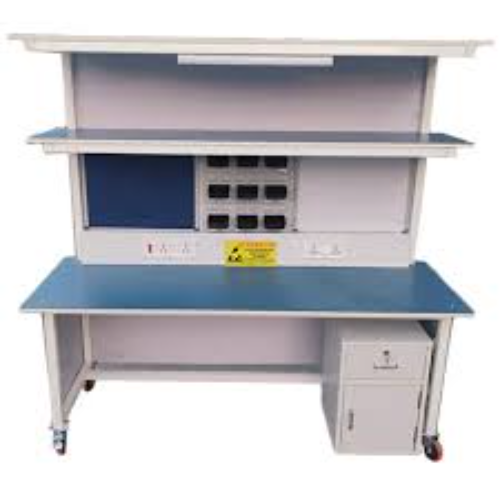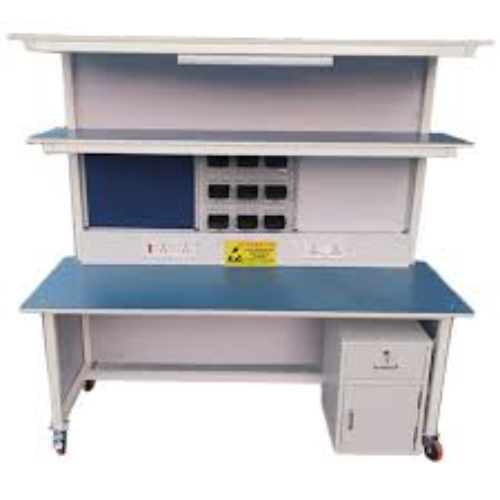ESD Workstation
Product Details:
ESD Workstation Price And Quantity
- 25000.0 INR/Unit
- 1 Unit
ESD Workstation Trade Information
- Paypal Cash Against Delivery (CAD) Cash on Delivery (COD) Cash Advance (CA) Cash in Advance (CID) Cheque Days after Acceptance (DA) Delivery Point (DP) Letter of Credit at Sight (Sight L/C) Telegraphic Transfer (T/T) Western Union Letter of Credit (L/C)
- 100 Unit Per Month
- 4 Days
- Yes
- safe packaging
- Asia
- All India
- yes
Product Description
An ESD (Electrostatic Discharge) workstation is a controlled environment designed to protect sensitive electronic components and devices from damage caused by electrostatic discharge. ESD can occur when static electricity builds up on a person, object, or surface and discharges when it comes into contact with a sensitive electronic component. This discharge can damage or destroy the components, leading to costly repairs or failures.
Here is a description of key elements in an ESD workstation:
1. ESD Safe Work Surface
-
The work surface should be made from materials that dissipate static electricity. Common materials include ESD mats, which are grounded to safely redirect static charges away from sensitive components.
2. Grounding System
-
A proper grounding system is essential to prevent the accumulation of static charge. Grounding straps or wristbands are worn by workers to discharge any static buildup on their bodies. These wrist straps are connected to the work surface or to a grounded point.
3. ESD Protective Wrist Straps
-
Workers wear ESD-safe wrist straps that prevent electrostatic charge from building up on the body. The wrist strap is typically connected to the ground, ensuring a safe discharge path.
4. Antistatic Equipment
-
All tools and equipment in the workstation, such as tweezers, screwdrivers, and soldering irons, should be ESD-safe. These tools are usually coated with special materials to prevent static buildup.
5. ESD Safe Containers
-
Components like circuit boards, IC chips, or any sensitive devices are placed in anti-static bags or containers to protect them from static discharge when they are not in use.
6. ESD Flooring
-
The floor of an ESD workstation should be made from materials that also dissipate static charge, such as conductive or static-dissipative tiles. This helps prevent the buildup of static charge on the ground that can be transferred to the workers.
7. Air Ionizers
-
To control airborne static charges, some workstations include ionizers, which release positive and negative ions to neutralize static charges in the environment.
8. ESD Safe Storage
-
Items that require protection from static (such as circuit boards or semiconductors) should be stored in ESD-safe containers or cabinets. These containers are designed to safely discharge static before it can reach sensitive components.
9. ESD Monitoring Equipment
-
Some advanced workstations use monitoring systems to ensure that the electrostatic protection system is functioning properly. These systems can include continuous checks of wrist straps and grounding systems.
10. Environmental Controls
-
ESD workstations are often kept in environments with controlled humidity and temperature levels, as extreme dryness or humidity can increase the likelihood of static discharge. Humidity control helps in reducing the potential for static electricity generation.
In summary, an ESD workstation is specifically designed to minimize the risks of electrostatic discharge by incorporating grounding, static-dissipative materials, and protective equipment. This ensures the safety of sensitive electronic devices during handling, assembly, or repair.

Price:
- 50
- 100
- 200
- 250
- 500
- 1000+
 |
PERBRU CORPORATION
All Rights Reserved.(Terms of Use) Developed and Managed by Infocom Network Private Limited. |







